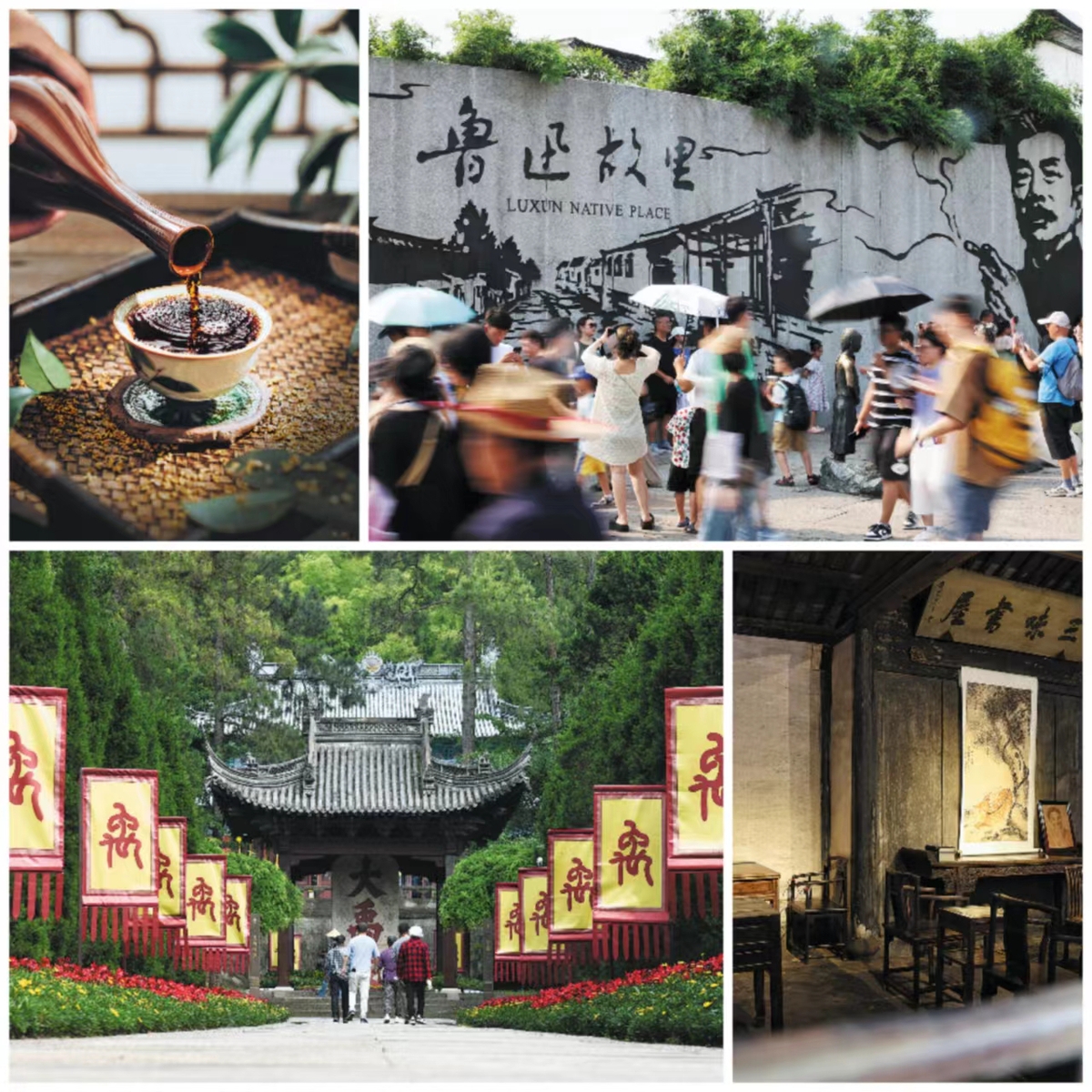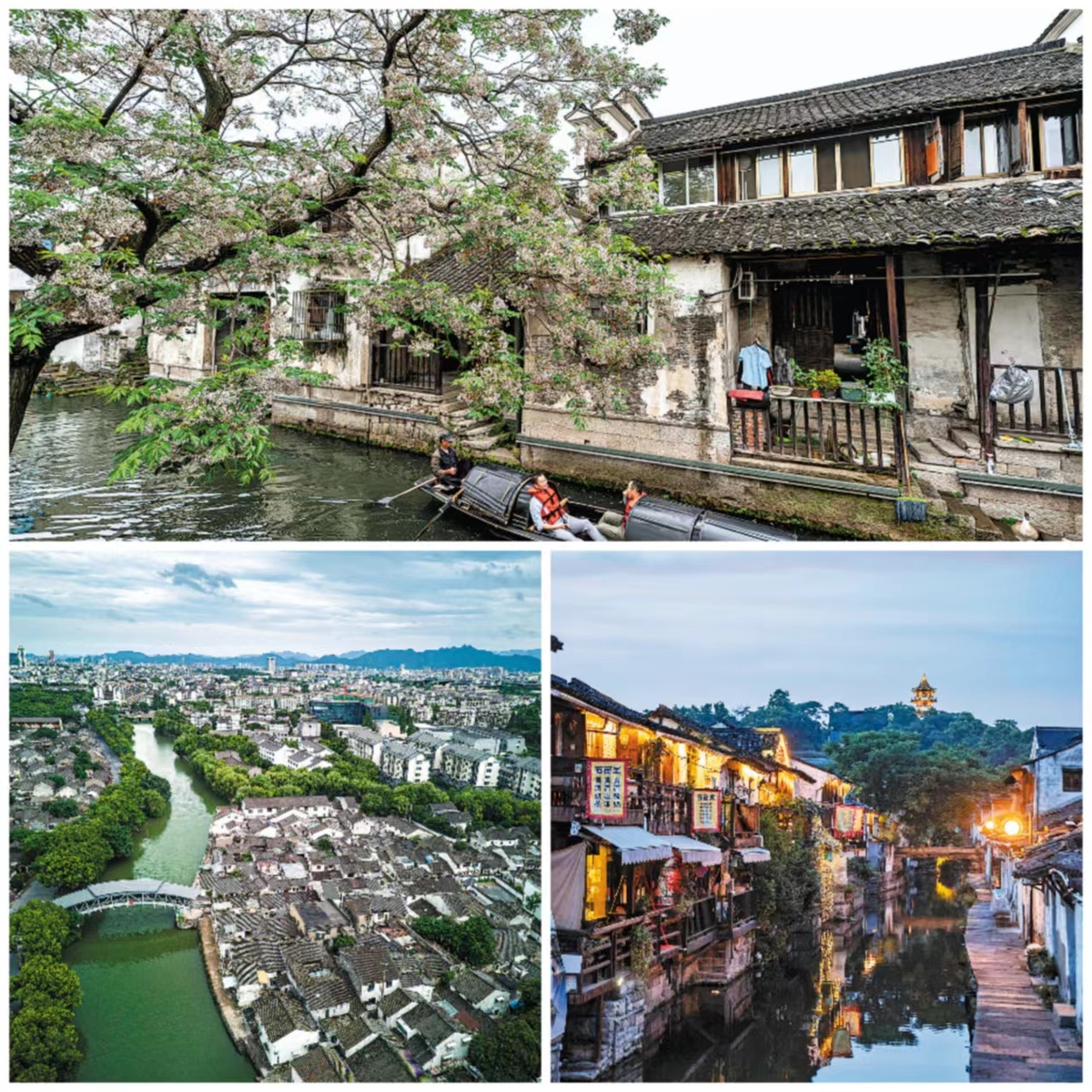Soaked in history

Shaoxing has played an important role in China's history throughout the centuries. As birthplace to a lot of notable figures, it has historic sites like Lu Xun Native Place and the Dayu Mausoleum. On an epicurean level, Shaoxing is perhaps most typically associated with huangjiu, the Chinese yellow liquor. WANG XIN/FOR CHINA DAILY/WANG GANG/CHINA NEWS SERVICE
From water to wine, as a city that can trace its lineage and traditions back nearly 5,000 years, Shaoxing has a lot to offer, Ma Zhenhuan reports
Birthplace of revolutionaries, artists and poets, Shaoxing has played an important role in China's history throughout the centuries.
Chinese litterateur and one of the foremost thinkers of his time, Lu Xun (1881-1936), a leading figure of the New Culture Movement of the 1920s and in conversations on reform in China, is representative of the city.
Lu Xun Native Place is where Lu spent his childhood. Formerly known as the Lu Xun Memorial Hall, it was built in 1953 and was among the earliest commemorative museums established in Zhejiang since the founding of New China in 1949.
In 2002, the Memorial Hall was expanded into the Lu Xun Native Place Scenic Area, which not only boasts restorations of locations immortalized by Lu's pen, such as Tugu Ancestral Hall, but also includes locations from textbooks, such as Baicao Garden and the Sanwei Study Room. The place preserves many of his belongings and recounts his life stories for generations of people to enjoy and admire.
Dayu, or Yu the Great, is a household name and a character who figures prominently in the origin of Chinese civilization. He is credited with establishing the Xia Dynasty (c. 21st century-16th century BC), the start of China's dynastic rule.
Indeed, it is often said in historical records that "around the Nine Regions, traces of Yu can be found everywhere, and temples commemorating Yu can be seen everywhere". Nine Regions is a term generally found in ancient Chinese history referring to Chinese territories and has since become synonymous with the nation.
Shaoxing is where Yu's mausoleum is located and where the most widely heard story of his is said to have taken place. The Dayu Mausoleum is located at the foothills of Kuaiji Mountain in the southeast of the city's Yuecheng district. Even local children can vividly recount his heroics in controlling the primordial floods that once ravaged the area.
It is said that when Yu the Great went about taming the floods, he met a member of a local clan and they married. However, a few days later Yu had to leave home to continue fighting the watery scourge. For the next 13 years, he did not set foot in his home again, even though he passed by it three times.
His wife, eagerly awaiting his return for years on end, could not help but utter in increasing frustration, "Oh, I am waiting for him." This single line, some experts say, is the first poem composed by a female writer in China.
"Yu is a cultural totem of perseverance and struggle for the Chinese nation in the face of great difficulties," says Tan Xuming, head of the Water History Committee of the Chinese Hydraulic Engineering Society.

As an ancient water town, Shaoxing is a famous tourist destination, featuring a network of canals lined with old houses and spanned by 3,000 bridges. CHINA DAILY
On an epicurean level, though, Shaoxing is perhaps most typically associated with huangjiu, the yellow liquor from southern China. Just as Bordeaux is the holy land of French wine, Shaoxing is widely regarded as the home of yellow wine in China. In 2006, the local production method was listed as a State-level intangible cultural heritage.
Distilled from fermented glutinous rice and wheat, huangjiu has an amber hue and, depending on the degree of fermentation and the aging time, the color varies from a very light gold to a deep chocolate brown. It's usually less than 20 percent alcohol by volume.
Shaoxing huangjiu is aged in earthenware vats, sometimes for decades. The longer it ages, the better the quality, and this is the type that is usually reserved for special occasions.
Local people traditionally store huangjiu for newborns to enjoy when they grow up; families will put urns of the spirit into the cellar and age it for a daughter's wedding banquet, giving the huangjiu the romantic name nyu'erhong, or "daughter red". For sons, the stored huangjiu is called zhuangyuanhong, or "scholar red", as it will be opened when the son enters college or marries.
There are many brands of huangjiu, and three of them are being served during the ongoing Asian Games — Gu Yue Long Shan, Kuaijishan, and Pagoda.
Just like sake with sashimi, and red wine with steak, huangjiu and crab is a classic combination: Chinese people believe that crab is a cooling food, and the warmed yellow wine does the necessary work in countering that and keeping the body's balance between yin and yang.
The museum of huangjiu, located in the northwest of the city, allows its visitors to see the whole production process, visit the cellar and taste the different varieties of huangjiu.
As an ancient water town, the city is lined with canals, crossed by more than 3,000 bridges that have become an architectural calling card for Shaoxing. Every bridge has a name connected with a story about a historical figure.
And there are plenty to choose from. The history of Shaoxing stretches back 5,000 years to the earliest settlements in China. Sitting on the southern banks of the Qiantang River, it was once home to the Neolithic Hemudu Culture.
During the Warring States Period (475-221 BC), when seven battling clans fought for dominance, Shaoxing was the capital of the state of Yue. Later, during the Song Dynasty (AD 420-479), it was the main economic, political and cultural center of southern China.
Fang Xiaoying contributed to this story.


